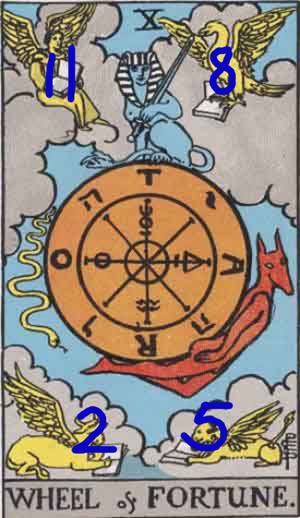|
|
General: PARA ENTENDER LA "RELATIVIDAD": EL EJEMPLO QUE PUSO EINSTEIN
Elegir otro panel de mensajes |
|
|
Plan "B" para entender la relatividad (V): El ejemplo que puso Einstein
p10

Finalizamos esta serie con este último artículo, donde trataremos de explicar de la forma más sencilla posible, de dónde proceden las transformaciones matemáticas que fundamentan la relatividad, y que reciben el nombre de "Transformaciones de Lorentz". Aunque el nombre suene a "chino", el fundamento matemático no es otra cosa que la famosa fórmula pitagórica de los triángulos rectángulos (aquello del cuadrado de la hipotenusa) y para entenderlo sólo hace falta saber multiplicar y dividir, así que, echad un vistazo al proceso porque es tan sencillo que merece la pena admirar la belleza de algo tan simple como grandioso.
Uno de los ejemplos más utilizados por Einstein para dilucidar su teoría de la relatividad es el de un tren que circula por una vía férrea. Hay que recordar que en aquellos tiempos (principios del siglo pasado), la tecnología no contaba con aviones, cohetes u otros medios de transporte mucho más rápidos. El tren de Einstein dispone de un punto de luz en el suelo (digamos, una bombilla) y a cierta altura (A), se colocaba un espejo. Cuando la bombilla se enciende, lanza un fotón hacia el techo, hasta que rebota contra el espejo, trazando así un recorrido vertical que tiene principio (la propia bombilla) y un final (el espejo del techo). Por supuesto, el tren está en marcha y se desplaza hacia aderlante a una velocidad constante, que llamaremos "V"
 El tren de Einstein marchando hacia la derecha a una velocidad constante "V". La distancia entre la bombilla y el espejo se llama "A"
Lo importante de este caso es que vamos a comparar lo que verá el maquinista del tren y lo que verá un observador que se encuentra detenido en el andén de la vía. Como es obvio, el maquinista marcha en la misma dirección que el tren, la bombilla, el espejo y el rayo de luz o fotón, moviéndose al unísono a la misma velocidad. A esto se le llama "Observador inercial", porque dicho observador tendrá la misma "inercia" que todo el dispositivo observado. Por su parte, el observador que se encuentra detenido en el andén, verá todo el proceso de forma diferente, por el mero hecho de encontrarse detenido, por lo que será llamado "Observador NO inercial".
Cuando la bombilla se activa, el maquinista verá un rayo de luz completamente vertical que trazará una trayectoria recta hacia el espejo, como se observa en el siguiente dibujo:
 Este es el recorrido del fotón, desde el punto de vista del maquinista: la luz parte hacia arriba en vertical y llega hasta el espejo. La trayectoria del fotón es vertical
Ahora bien, el observador que se encuentra en el andén, verá algo completamente diferente. A medida que el tren avance (hacia la derecha), este observador NO inercial comprobará que el fotón no sólo asciende hacia el espejo, sino que además, avanza hacia la derecha, en la misma dirección que marcha del tren. Uniendo con una línea todas las posiciones que va ocupando el fotón a lo largo de su recorrido, el señor del andén "creerá" que la luz sigue una trayectoria diagonal ascendente desde el punto inicial (Posición 1) hasta el punto final (posición 5), como indica el siguiente dibujo:
 Posiciones del fotón ascendiendo, según el punto de vista del observador del andén
Uniremos estas posiciones "relativas" del fotón, en cada momento, para trazar la línea que las une. Esta trayectoria de la luz (en color verde, abajo), será el recorrido que, a ojos del observador NO inercial, traza la luz del dispositivo:
Así que ya tenemos determinados los dos recorridos relativos que va a trazar el fotón: Un recorrido vertical a ojos del maquinista, y un recorrido diagonal ascendente, a ojos del observador del andén.
No resulta difícil calcular qué distancias hay entre los puntos de ambos recorridos, ya que conocemos la altura total que alcanza el fotón desde la bombilla hasta el espejo, así como la distancia que avanza el tren, puesto que también conocemos su velocidad constante (distancia entre la Posición 1 inicial y la posición 5 final). Con todos estos datos, trazaremos el siguiente diagrama:

Si nos fijamos bien, lo que tenemos aquí es un simple triángulo rectángulo cuyos lados podemos calcular muy fácilmente y que corresponden a:
D = es la trayectoria del fotón, desde el punto de vista del observador del andén
A = es la trayectoria del fotón, desde el punto de vista del maquinista
R = es el recorrido que efectúa el propio tren durante su avance, desde que el fotón sale de la bombilla (posición 1), hasta que llega al espejo (posición 5)

Pues bien, para calcular el valor que tienen estas distancias, sólo necesitamos conocer la velocidad y el tiempo, usando la sencilla fórmula de VELOCIDAD = DISTANCIA entre TIEMPO. O lo que es lo mismo: DISTANCIA = VELOCIDAD por TIEMPO
D = V x T
En nuestro ejemplo, conocemos la velocidad de un fotón (lo llamamos "C"), la velocidad del tren (la llamaremos "V"), el TIEMPO que tarda el tren en avanzar (lo llamaremos "T") y el TIEMPO que tarda el fotón en completar su recorrido vertical (lo llamaremos "T1"). Con todos estos datos, se pueden calcular perfectamente las tres distancias que nos interesan, D, A y R.
 FIGURA PRINCIPAL: ESPACIO = VELOCIDAD por TIEMPO
Sabemos que las distancias son:
D= Velocidad de la luz x Tiempo T
A= Velocidad de la luz x Tiempo T1
R= Velocidad del tren x Tiempo T
Y, finalmente, estas tres distancias guardan una relación pitagórica entre ellas, donde el cuadrado de la hipotenusa (D) es igual al cuadrado del cateto "A, más el cuadrado del cateto "R", o lo que es igual, Hipotenusa D al cuadrado, menos Cateto R al cuadrado, igual a cateto A al cuadrado:

Y ya sólo nos queda operar con todos estos datos. Las operaciones necesarias para comparar el Tiempo que tarda la luz en hacer el recorrido "D" para el observador NO inercial, con el Tiempo de la luz en el recorrido "A" del observador Inercial, nos van a llevar a descubrir el factor de Lorentz, que será el factor con el que se compararán los tiempos, los espacios y las velocidades relativistas. El desarrollo que explicamos a continuación es muy sencillo (está al alcance de cualquier escolar de secundaria), pues sólo exige saber despejar incógnitas en una ecuación bastante básica. Como decíamos al principio, merece la pena seguirlo detalladamente, porque su sencillez es tan impresionante como su grandeza... vamos allá:

PASO 1: En la última ecuación indicada arriba, sustituimos el valor de cada lado del triángulo, por el correspondiente a
Dist. = Veloc. x Tiempo
(Se indicaba más arriba en lo que llamábamos "Figura Principal")

PASO 2: Resolvemos el cuadrado de los paréntesis

PASO 3: Resulta que la parte izquierda de la ecuación tiene un factor común, que es el Tiempo "T al cuadrado", por lo que simplificamos dicho lado, quedando:

PASO 4: Despejamos "T al cuadrado" del lado izquierdo de la ecuación, para aislar este término

PASO 5: Para simplificar el término central (donde aparecen las velocidades "C" y "V"), dividimos arriba y abajo por C al cuadrado:

PASO 6: ÚLTIMO PASO, extraemos la raíz cuadrada en ambas partes de la ecuación, para simplificar los "Tiempos" "T" y "T1"
Y así es como se obtiene ese factor de conversión conocido como "Transformación de Lorentz", mediante el que se relacionan entre sí el Tiempo que mide un observador Inercial (T1) y otro No inercial (T), en función de las velocidades relativas a las que uno se mueva con respecto a otro. Este factor de conversión se utiliza tanto en los cálculos relativistas, que se suele simplificar con una letra griega"gamma" :
Y, con la esperanza de haber conseguido arrojar un poco de luz sobre el mundo de la Relatividad, despedimos esta serie de 5 artículos sobre las fascinantes paradojas de lo "imposible".
http://www.canaldeciencias.com/2013/07/02/plan-b-para-entender-la-relatividad-v-el-ejemplo-que-puso-einstein/
|
|
|
 Primer
Primer
 Anterior
2 a 7 de 7
Siguiente
Anterior
2 a 7 de 7
Siguiente
 Último
Último

|
|
|
| MihrYazd wrote: |
Please elaborate on the spins, i am eager to hear your thoughts, also do you have an overall Cosmological model, a frame , this will really help.
Namaste,
Mo |

nothing has changed regarding my cosmology.
swastika/maltese cross/tarot card X/sacred knots etc. are all still central

4 ROYAL STARS = CARD X of the TAROT

See this pi wheel rotate?
SEE the LETTER E rotate 90 degrees four times = 360 degrees?
E = M = 3 = W
 
4 ROYAL STARS = EM3W or 4 EEEE connected to the 4 TTTT along with the 'N' that forms the TENET GRAVITY CROSS
4 EEEE = 4 fixed stars = 4 E vangelists
find those 4 EEEE on the SATOR SQUARE or the MNEME plate 5000 BCE
MO dude I am so close to taking this down to the basics.
how does 37 and 27 and 137 FIT the following FORMULA?
E = m
where do we put the c^2

aME-X advertisement
137
The tribe of DAN + 137 or is it the tribe of DAN + #1 + EL?
the universe is 13.7 billion years old
what is the relationship between 37 and 27 and 137?
what does 137 mean to a physcist?
like a fella like Wolfgang Pauli?
| Quote: |
Wolfgang Ernst Pauli (April 25, 1900 – December 15, 1958) was an Austrian theoretical physicist and one of the pioneers of quantum physics. In 1945, after being nominated by Albert Einstein, he received the Nobel Prize in Physics for his "decisive contribution through his discovery of a new law of Nature, the exclusion principle or Pauli principle," involving spin theory, underpinning the structure of matter and the whole of chemistry.
Pauli introduced the 2 × 2 Pauli matrices as a basis of spin operators, thus solving the nonrelativistic theory of spin. This work is sometimes said to have influenced Paul Dirac in his creation of the Dirac equation for the relativistic electron, though Dirac stated that he invented these same matrices himself independently at the time, without Pauli's influence. Dirac invented similar but larger (4x4) spin matrices for use in his relativistic treatment of fermionic spin.
|
so guess what?
http://kachina2012.wordpress.com/2007/08/13/god-is-left-handed/
Wolfgang Pauli and ME belong to the same unique club.
the counsel of the wolf, a clan that is privy to the numb3rs 137 and EL.
| Quote: |
| In 1958, Pauli was awarded the Max Planck medal. In that same year, he fell ill with pancreatic cancer. When his last assistant, Charles Enz, visited him at the Rotkreuz hospital in Zürich, Pauli asked him: “Did you see the room number?” It was number 137. Throughout his life, Pauli had been preoccupied with the question of why the fine structure constant, a dimensionless fundamental constant, has a value nearly equal to 1/137. Pauli died in that room on 15 December 1958. |
so he died in ROOM 137 on 15/12/1958?
how about ROOM 137 on 15121958?
how about ROOM 137 on 1, 1, 2, 5, 8, remainder 159. (15 or 6)
I have proposed that E = m and that c^2 can be placed on either side of the equation E = m.
which in FACT it can.
So then how does 137, 27 and 37 fit this formula E = mc^2 ?
A party, an a-wake-ning in ROOM 1258 discussing the death of Wolfgang in ROOM 137?
http://kachina2012.wordpress.com/2008/10/02/knights-templar-and-da-vincis-2012-awakening-in-room-1258/
namaste
_________________
KEY 528=Swastika=ancient Spherical Standing Wave Theory
“A theory is more impressive the greater is the simplicity of its premise, the more different are the kinds of things it relates and the more extended its range of applicability…”
-Albert Einstein
|
|
|
|
|
ANKH = E = mc2 KA = worm hole?   Wave (N) having some effect on Darkness and Light( Kek/Kekhet) at the speeds of Infinity and negative infinity (Heh/Hehet) produces Life (Ankh). http://www.secretoftheankh.com/?tag=dogonKa, is the life force. The word "swastika" comes from the Sanskrit svastika - "su" meaning "good," "asti" meaning "to be," and "ka" as a suffix. Good to be life (force). Giuwah = Life force that exists. Ka, perhaps represents the wormhole that created life, and life being the physical holographic universe. Wormholes are at the center of every galaxy..  
Giuwah wrote:
nice post NOTE for example....you enter STAGE LEFT hand and exist STAGE RIGHT hand or as this 2012forum has proved beyond a reasonable doubt, EWE enter a commie and exit a RIGHTEOUS western SOB.  Or note the position of the feet and the head relative to entry and exit wounds. OUCH JFK St. John the Baptist... True Messengers leave this realm with head wounds OR they lose their MiNd trying to find their heART. yes the herd of ewe can include me in the short list or folks who lose their heads/minds. But we don't mind if we lose our minds. YA gotta be touched by an angel to get it.  namaste
_________________
KEY 528=Swastika=ancient Spherical Standing Wave Theory
“A theory is more impressive the greater is the simplicity of its premise, the more different are the kinds of things it relates and the more extended its range of applicability…”
-Einstein
http://2012forum.com/forum/viewtopic.php?f=9&t=9896&start=60
|
|
|
|
(ANTIGUO PACTO O ANTIGUO TESTAMENTO) = 39 ESCRITOS
PACTO RENOVADO O NUEVO TESTAMENTO = 27 ESCRITOS
|
LA MISMA BIBLIA ESTA DISEÑADA EN FUNCION A LAS PLEYADES POR EL MISMO PAPADO, TAMBIEN EN FUNCION A LAS PLEYADES. GLORIA A DIOS TODOPODEROSO QUE EL PAPADO CANONIZO LA ESCRITURA. LA MISMA BIBLIA ESTA DISEÑADA CON EL PATRON DE FILADELFIA, OSEA LAS PLEYADES. LA MISMA ESCRITURA TIENE EL PATRON DE LA CONSTELACION DE TAURO. NOTEN EL NUMERO 66=33*2 E INCLUSO EL NUMERO 12, CON REFERENCIA A LOS PROFETAS MENORES, ES UN NEXO CON LA SANTA CENA. TODO ES ALQUIMIA, EN UN FUERTE NEXO CIENTIFICO CON LA CONSTELACION DEL TORO. NOTEN EL NEXO DEL NUMERO 9= 9 MESES LUNARES DE GESTACION DE UN BEBE EN EL CONTEXTO AL NUMERO 6 =SEIS= SIX= SEIS. INCLUSO NOTEN EL NUMERO 33, EN EL MARCO AL 3 A LA ISQUIERDA Y A LA DERECHA. TODO ES ALQUIMIA.
|
|
|
|
|
 Primer
Primer
 Anterior
2 a 7 de 7
Siguiente
Anterior
2 a 7 de 7
Siguiente
 Último
Último

|
|
| |
|
|
©2025 - Gabitos - Todos los derechos reservados | |
|
|

